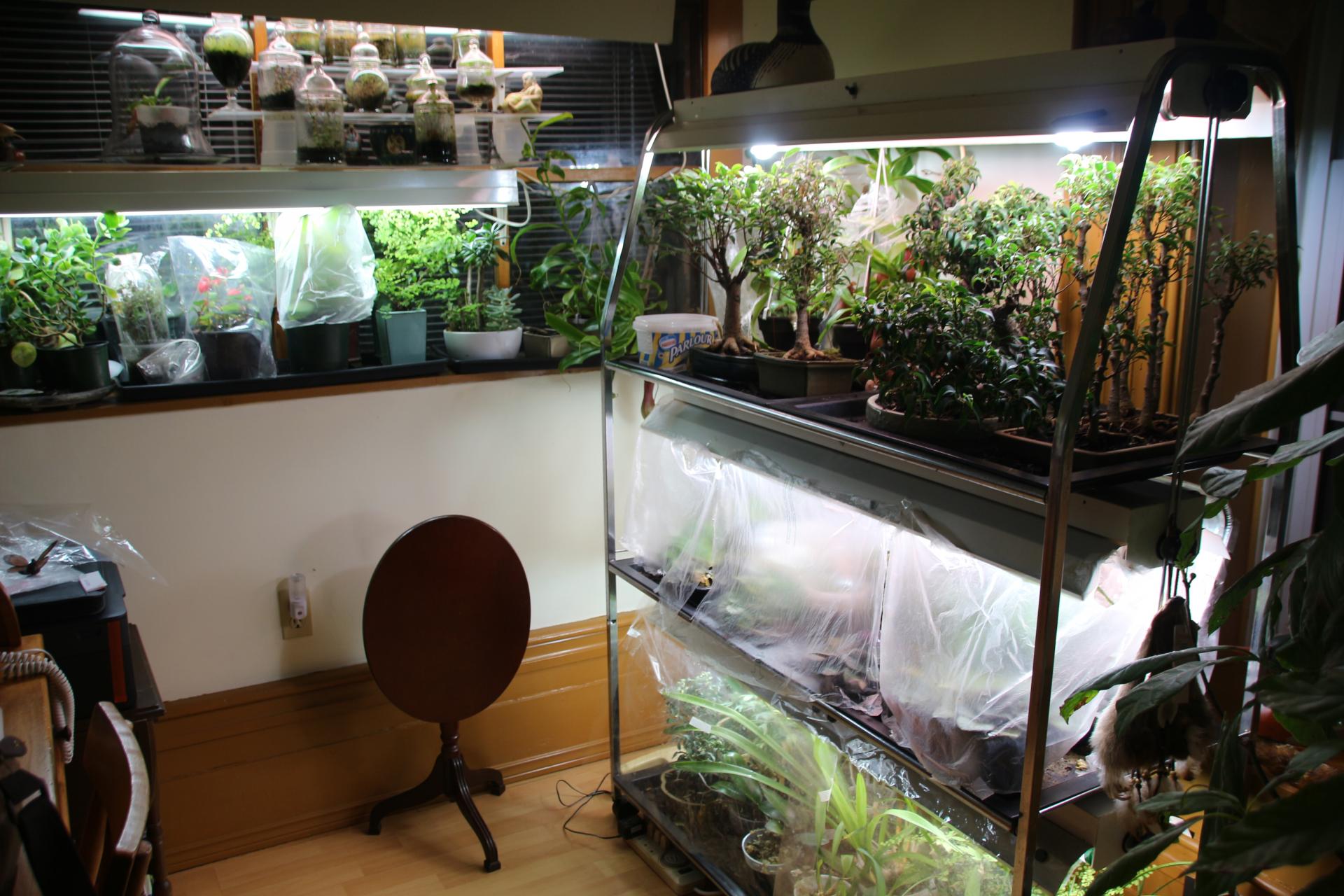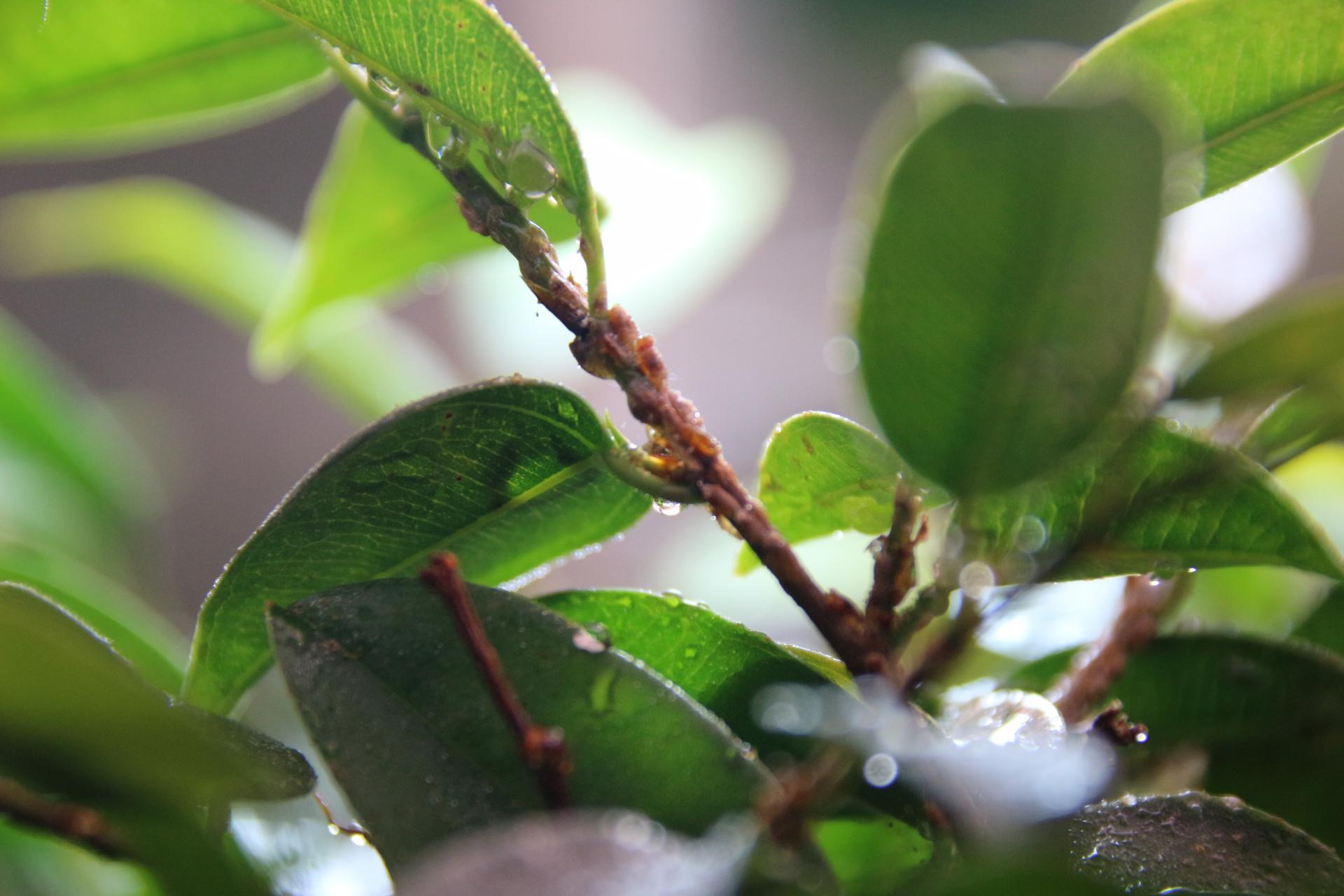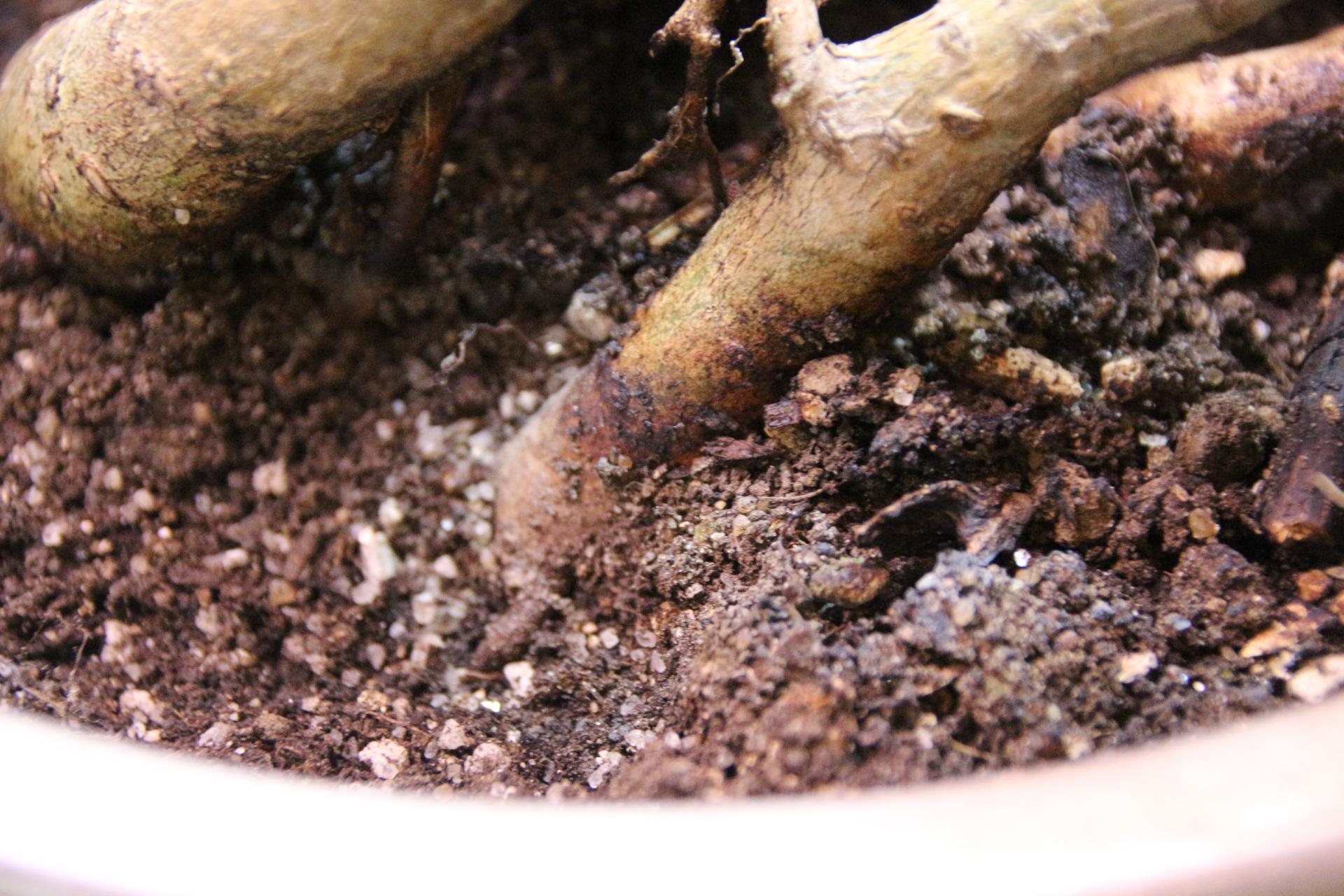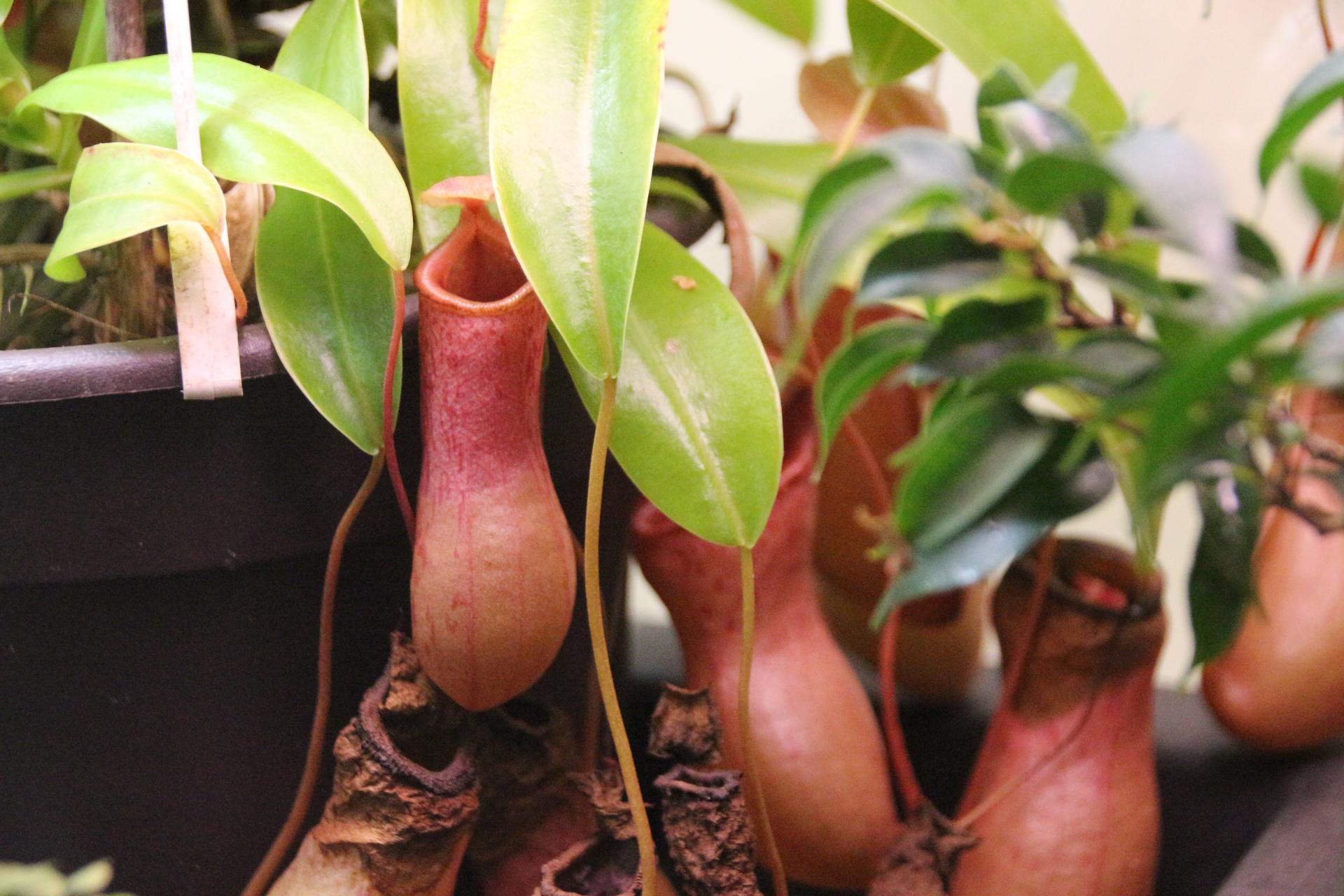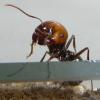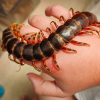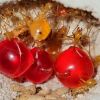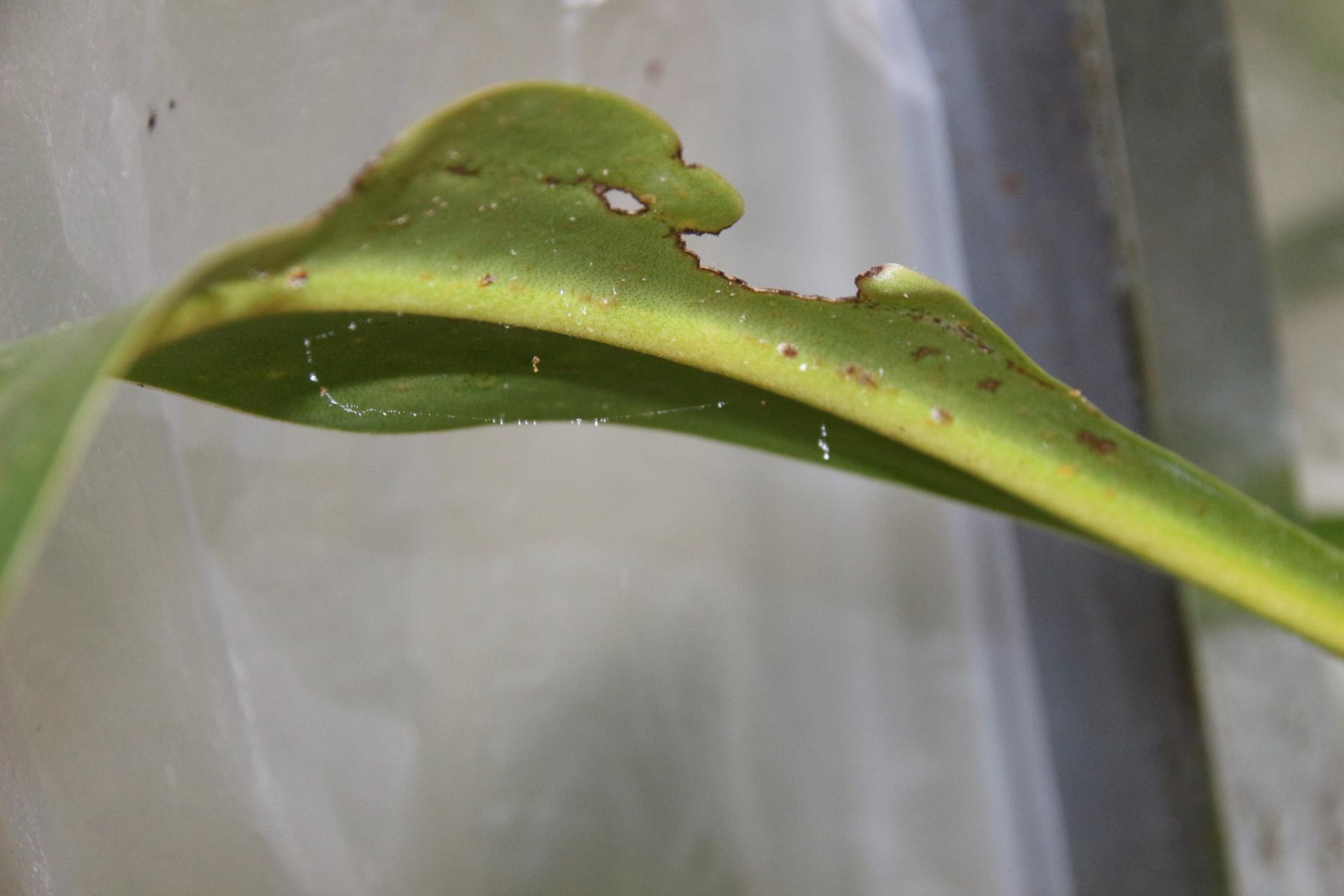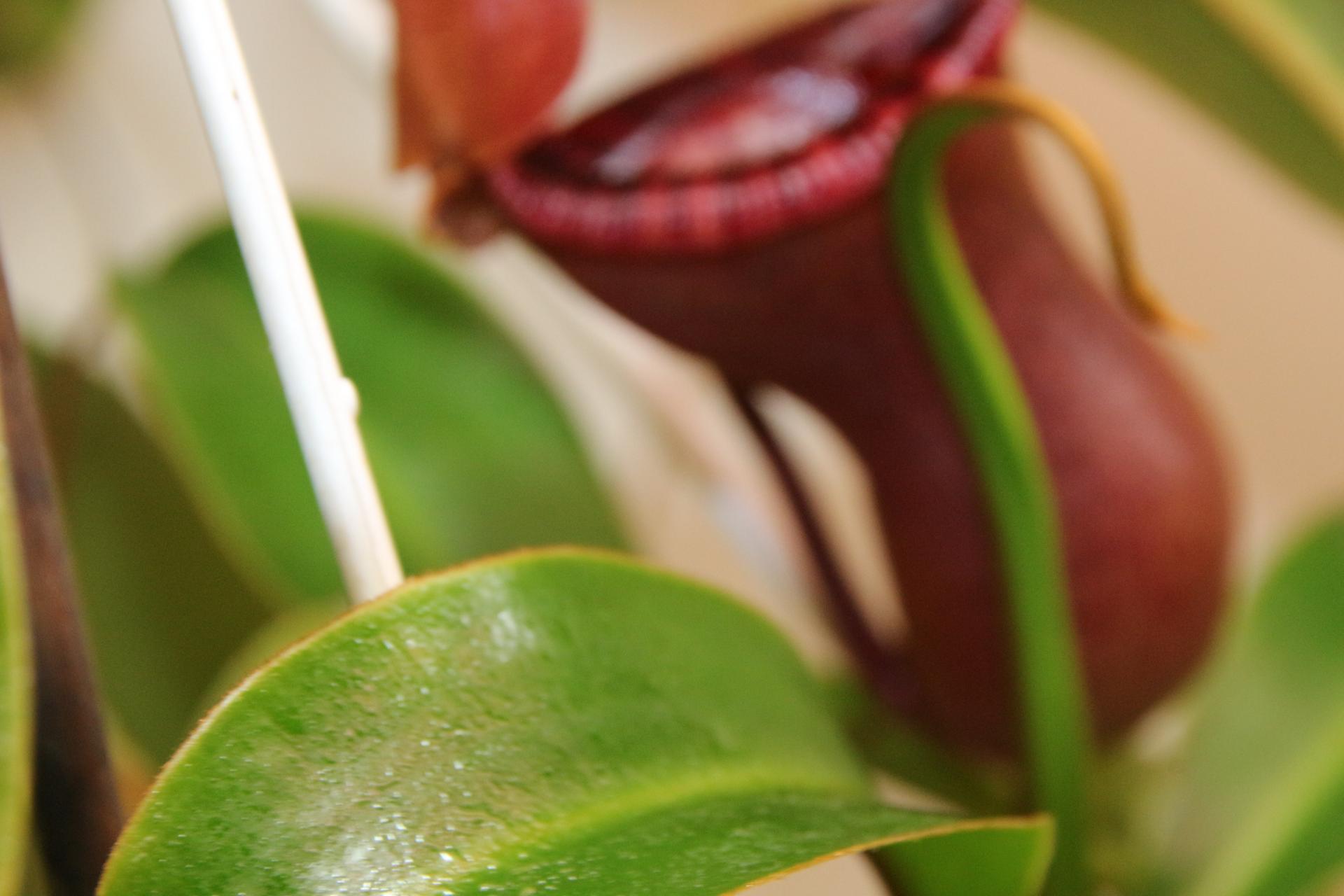Rainforest Ecosystem on my Plant Stand
Welcome to our plant room and study where I grow my tropical plants and various other things. It's pictured below. On the top level of the plant stand to the right I keep some of my tropical bonsai trees as they overwinter. They are various bonsai cultivars of Ficus benjamina like wiandi and toolittle. Some are over 30 years old. On the other levels I grow violets, ferns, orchids and pitcher plants. The plastic fronts keep the air humidity high from drainage trays filled with wet wood chips. High humidity and the additional heat from the transformers (ballasts) of the plant lights provide the conditions for tropical plants to thrive in our dry home in winter.
Plants have been growing on this stand for over 30 years and a mini ecosystem has developed over that time. At its' foundation are the wet wood chips in the drainage trays that provide humidity to the plants while they provide a home for springtails, pill bugs and other critters, plus there's a host of spiders with a network of webbing on the stand. Flies, fruit flies, fungus gnats, moths and mosquitoes are all attracted to the lights. They waste themselves flying against the lights and often fall into the chips when they die, providing a tasty treat for many of the springtails. Pitcher plants are there to trap unwary wanderers as well.
One of the constant pest problems that I have with these fig trees are scale insects. I've identified them as soft brown scale, Coccus hesperidium, (see above). A large problem with them is the amount of honeydew that they produce. Ants probably milk them, but they can just lick it from the leaves as scale insects eject honeydew and cause areas well away from them to be covered in it. Sometimes it grows black mold. Scale insects live on sap (like aphids) and are usually found on actively growing areas like new shoots and stems, but their honeydew can cover leaves, trunk, roots, even the side of a pot. I usually spray them with a mix of water, Sunlight dish soap, rubbing alcohol and neem tree oil. I put the trees in the shower, spray them and let them sit for a couple of hours, and then rinse them with a strong handheld shower. I do this every year as part of their spring cleanup. I never seem to totally get rid of the scale insects. This year might be different. I've let these trees go much longer than normal as I'd hoped to do some videotaping, but time delays and illness mean that hasn't happened and I must press ahead with some cleaning. I'll try to preserve some of the scale insects, but the honeydew has to go.
Late last fall I noticed some ants around the fig trees but really didn't pay much attention. After seeing them four of five times in a tree I noticed they had a travel route between there and an adjacent tree where they seemed to be living in the pot. I gave them a couple of dead flies which were dragged under the pot and consumed. They looked like Lasius americanus to me, they're a forest dwelling species. I never took any pictures. They haven't made an appearance since late in October, I can only assume they are in diapause despite being in a heated room and sitting on a warm transformer from the plant lights below. I've cleaned loose soil from the surface and there is definite activity as they are opening access holes. I'm posting this now to chronicle the development of this colony and I'll update when and if they make a grand appearance. Rather than pull the tree out of the pot and have a look at the ants, I've learned I think from experience, that usually more harm than good comes from messing with things that ain't broke. I'm going to be patient and keep my eyes open because I know my other small Lasius colonies are shy and secretive and send out few foragers. Spring will soon be here, and they'll be active soon enough.
These trees haven't been outside in over a year. They spent last summer under the lights instead of the greenhouse where I usually put them because the summer was too cool and miserable. They did better in the house. Anyway, if a queen got into that pot, it must have been the summer before. I've wanted to put a colony in the plant stand since I started keeping ants, but that was impossible because of my wife's one unbreakable rule about having no ants in the house. In this instance, I am completely guilt free, blameless and innocent. It was an act of nature. She seems to be accepting them as part of the insect life we tolerate around here like some lucky spiders that live in a few corners. So far, she hasn't made me take the pot outside, but her attitude might change once the ants start foraging. They're secretive ants and in small numbers they may slip under the radar for a while. They've lived there for quite some time, and I barely noticed them, so I'm trying to be cool about it right now. There's a fig tree growing in the pot with the ants, and it has some scale insects living on it, enough for this small colony so I'll keep them going. That way the ants will have a ready food supply wherever I move them.
There are other predators besides spiders in this ecosystem. Nepenthes pitcher plants are ant catching specialists from tropical rainforests and I have several of them growing on the plant stand and more nearby. It's not all sweetness and light for insects living on the plant stand.
I couldn't think of a better way to combine three of my favourite things, carnivorous plants, bonsai trees and ants. Scale insects and their honeydew tie them all together beautifully, so I think I'll introduce a few more small colonies to their own fig trees and scale insects this summer when I move them to the greenhouse. In my case, it's much easier to provide scale insects than aphids for a colony of ants.
You can see some crappy video of the plant stand at
RPT
Edited by rptraut, February 10 2024 - 1:57 AM.




